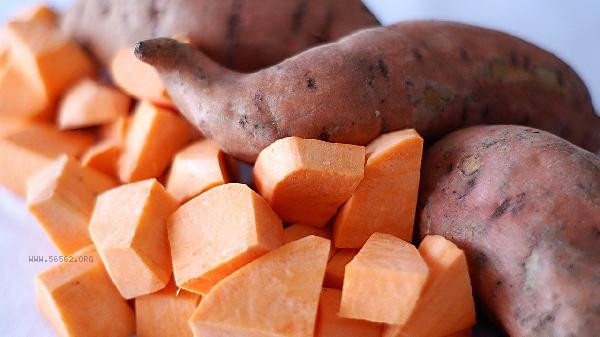Sweet potato porridge can generally be paired with food, which has the benefits of complementary nutrition, but also has some drawbacks that some people need to pay attention to. Sweet potatoes are rich in dietary fiber and vitamin A, and porridge is easy to digest. The combination of the two can help improve gastrointestinal function, but excessive consumption may cause bloating or blood sugar fluctuations. The combination of sweet potatoes and porridge can increase dietary fiber intake. The pectin and resistant starch in sweet potatoes can delay gastric emptying, enhance satiety, and are suitable for people who need to control their weight. The gelatinized starch in porridge is more easily absorbed by the human body and is more friendly to those with weaker digestive function. After mixing the two, the beta carotene in sweet potatoes combines with a small amount of fat in grains, which can promote the absorption of fat soluble vitamins. Some gastrointestinal sensitive individuals may experience bloating due to the action of oxidase in sweet potatoes. It is recommended to add a small amount of sweet potatoes and extend the cooking time. Patients with diabetes should pay attention to that both are high carbohydrate foods. Mixed consumption may rapidly increase postprandial blood sugar. It can be used with green leafy vegetables to delay sugar absorption. Sweet potato peels contain a high amount of alkaloids, and it is recommended to thoroughly peel and clean them before cooking.

When consumed in daily life, red heart sweet potatoes can be chosen to increase beta carotene intake, and brown rice porridge can be used to enhance the content of B vitamins. People with poor gastrointestinal function should cut sweet potatoes into small pieces and cook them until soft and tender. For those with abnormal blood sugar, it is recommended to monitor their blood sugar response after eating. When individuals with special constitutions experience persistent bloating or indigestion, they should adjust their food intake or consult a nutritionist for guidance.










Comments (0)
Leave a Comment
No comments yet
Be the first to share your thoughts!